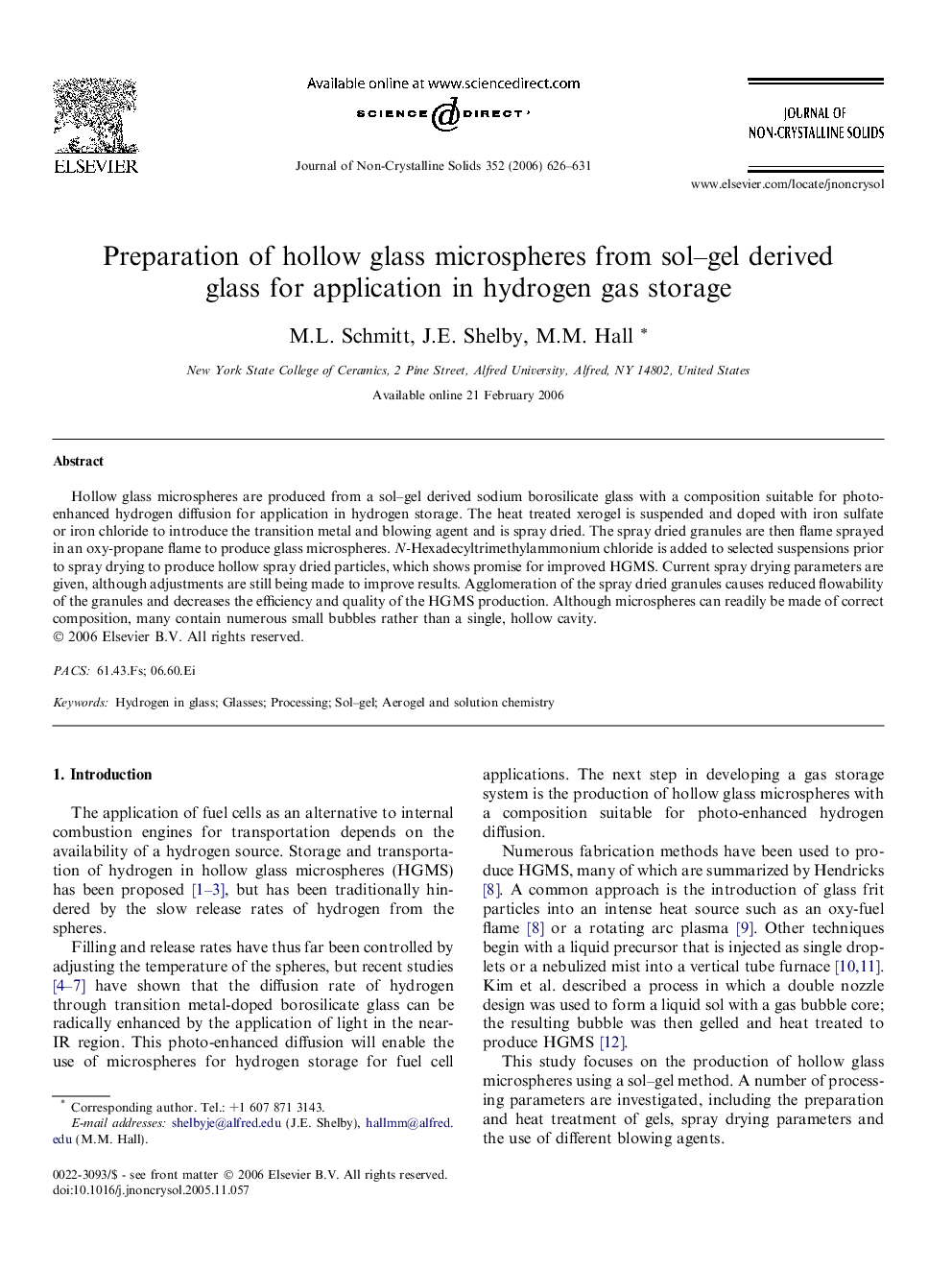| Article ID | Journal | Published Year | Pages | File Type |
|---|---|---|---|---|
| 1486510 | Journal of Non-Crystalline Solids | 2006 | 6 Pages |
Hollow glass microspheres are produced from a sol–gel derived sodium borosilicate glass with a composition suitable for photo-enhanced hydrogen diffusion for application in hydrogen storage. The heat treated xerogel is suspended and doped with iron sulfate or iron chloride to introduce the transition metal and blowing agent and is spray dried. The spray dried granules are then flame sprayed in an oxy-propane flame to produce glass microspheres. N-Hexadecyltrimethylammonium chloride is added to selected suspensions prior to spray drying to produce hollow spray dried particles, which shows promise for improved HGMS. Current spray drying parameters are given, although adjustments are still being made to improve results. Agglomeration of the spray dried granules causes reduced flowability of the granules and decreases the efficiency and quality of the HGMS production. Although microspheres can readily be made of correct composition, many contain numerous small bubbles rather than a single, hollow cavity.
